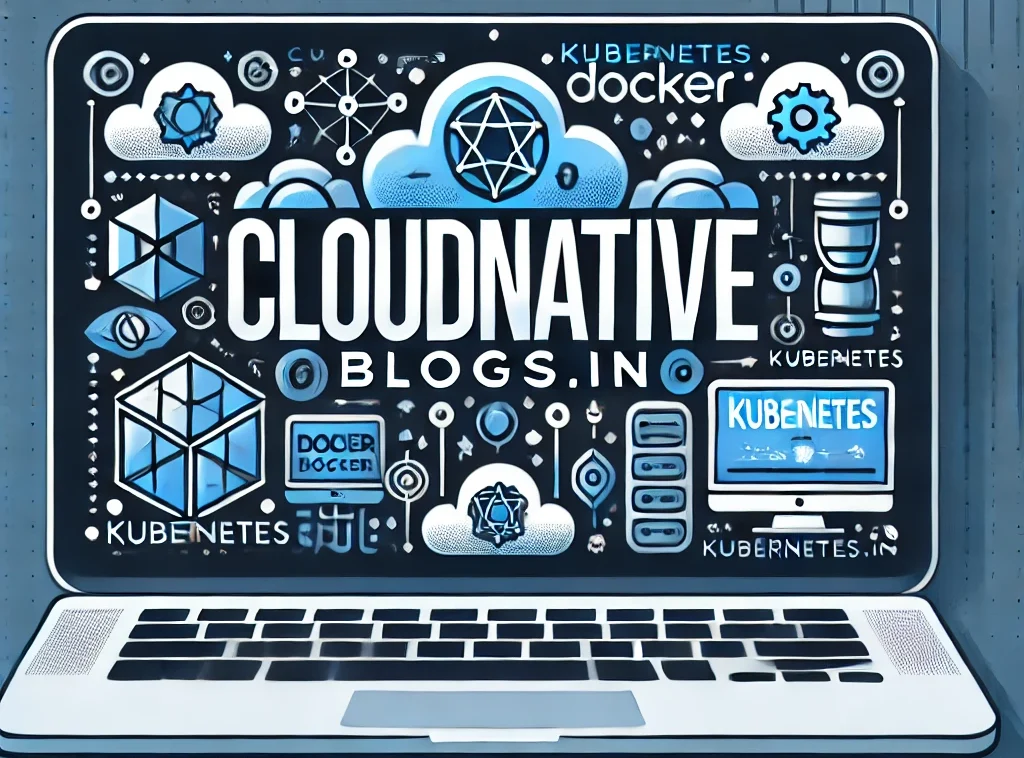Arm’s success in data centers and other markets is reshaping chip technology, emphasizing energy efficiency, customization, and security, while challenging the dominance of x86 processors in the cloud and AI sectors.
Understanding MVVM Architecture in Android Development
MVVM architecture in Android provides a clean separation of concerns, improves testability, and enhances maintainability, making it ideal for modern, scalable Android applications.
Building Cloud-Native Applications: The 12-Factor App and Beyond
Table of Contents (TOC) Introduction What is a Cloud-Native Application? Overview of the 12-Factor App Methodology Why the 12-Factor Principles Matter Chapter 1: The 12 Factors Factor 1: Codebase Factor 2: Dependencies Factor 3: Config Factor 4: Backing Services Factor 5: Build, Release, Run Factor 6: Processes Factor 7: Port Binding Factor 8: Concurrency Factor […]
Hybrid Cloud Solutions: Why They Matter for Enterprises
Hybrid cloud solutions combine the benefits of public and private cloud environments, offering enterprises flexibility, scalability, enhanced security, and cost-efficiency to meet diverse workload and regulatory requirements.
Cloud Computing for the Education Sector: Revolutionizing Learning
Cloud computing is transforming education by enhancing accessibility, collaboration, and data-driven insights. It offers cost-effective, scalable solutions, supporting personalized learning while addressing challenges in security and digital equity.
How to Choose the Right Cloud Provider for Your Business: A Comprehensive Guide
Choosing the right cloud provider is crucial for your business’s growth and security. Evaluate your needs, understand different service models, and consider factors like scalability, security, and cost to make an informed decision.
Data Privacy in Cloud Computing: What You Need to Know
Data privacy in cloud computing is essential for organizations migrating to the cloud. Implementing encryption, compliance, and strict access controls are key strategies to ensure sensitive data remains protected.
Mastering Computer Networking: A Complete Guide to Theory, Protocols, and Practical Applications
Book Title: "Mastering Computer Networking: A Complete Guide to Theory, Protocols, and Practical Applications" Table of Contents Chapter 1: Introduction to Computer Networking What is Computer Networking? The Importance of Networking in Modern Society History and Evolution of Computer Networks Types of Computer Networks (LAN, WAN, MAN, PAN) Network Components: Devices, Media, and Protocols Chapter […]
Understanding Kerberos and Managing Authentication and Encryption on Linux Systems
Kerberos provides secure authentication and encryption for Linux systems, ensuring safe communication between users and services. Learn how Kerberos handles cryptography and configuration for enhanced network security.
How SQLynx Enhances Multi-Database Management and Boosts Developer Productivity
SQLynx revolutionizes multi-database management by providing a unified interface for seamless data integration, boosting productivity, and reducing errors, making it an indispensable tool for developers working in diverse environments.
The Benefits of Big-Endian CPU Architecture Over Little-Endian Systems
Big-endian CPU architecture offers benefits such as improved network compatibility, more intuitive data representation, and optimized performance in specialized tasks, making it ideal for high-performance and legacy systems.
Understanding Polish Notation: Pros, Cons, and Why It’s Challenging for Data Representation
Polish notation offers a unique and efficient way to represent mathematical expressions but can be challenging for humans to interpret due to its unfamiliar syntax and lack of visual cues like parentheses.
Mastering Docker: A Comprehensive Guide to Containerization and Deployment
Mastering Docker: A Comprehensive Guide to Containerization and Deployment Table of Contents (TOC): Introduction to Docker 1.1 What is Docker? 1.2 Why Use Docker? 1.3 Understanding Containerization 1.4 Docker vs Virtual Machines 1.5 Key Docker Concepts Getting Started with Docker 2.1 Installing Docker 2.2 Verifying the Installation 2.3 Docker Command Line Basics 2.4 Your First […]
Why Docker is Essential for Modern Development Environments and Its Alternatives
Docker provides consistent, isolated environments for modern development, enabling faster deployments and more efficient resource utilization. However, alternatives like Podman and Kubernetes also offer unique benefits.
Shift-Left Testing: The Key to Accelerating Quality in Agile Development
Shift-left testing accelerates software quality by moving testing activities earlier in the Agile development cycle, enabling faster feedback, cost savings, and better collaboration for continuous delivery.
What is Ambient Computing and How It Will Transform Our Interaction with Technology
Ambient computing is revolutionizing how we interact with technology, offering seamless, personalized experiences. Learn how this technology could transform your daily life and its potential impact on privacy.
Waterfall vs Agile: Choosing the Right Development Methodology
Waterfall and Agile are two distinct software development methodologies. Waterfall follows a linear approach, while Agile emphasizes flexibility, customer collaboration, and iterative development cycles. Choose wisely based on project needs.
Best Practices for Organizing and Maintaining a Product Backlog in Scrum
Discover the best practices for keeping your Product Backlog organized and up-to-date. Learn effective backlog refinement, prioritization, and team collaboration techniques to improve Scrum team productivity.
Understanding Batch SQL Injection: A Real-World Threat to Data Security
Batch SQL injection poses a serious threat to data security, enabling attackers to execute multiple SQL commands, leading to data breaches and financial losses. Learn how to protect your organization.
The Kubernetes Handbook
The Kubernetes Handbook Table of Contents Introduction to Kubernetes What is Kubernetes? History and Evolution Use Cases and Benefits Kubernetes Architecture Core Components Master Node Worker Nodes Control Plane and Data Plane Kubernetes API Getting Started Setting Up Your Environment Minikube and Kind Cloud Provider Options Basic kubectl Commands Your First Kubernetes Cluster Understanding Pods […]
Building Scalable Applications with Java, Spring, and MySQL
Building Scalable Applications with Java, Spring, and MySQL Table of Contents: Introduction 1.1. Overview of Java, Spring, and MySQL 1.2. Target Audience 1.3. How to Use This Book Getting Started 2.1. Setting Up Your Development Environment 2.2. Installing Java and MySQL 2.3. Introduction to Integrated Development Environments (IDEs) 2.4. Creating Your First Java Application Java […]
The Essential Guide to Testing React Components
Writing tests for React components enhances functionality, improves code quality, and boosts team collaboration, making it essential for building robust and maintainable applications.
Mastering MySQL Views for Efficient Data Management
Unlock the potential of MySQL views to streamline data retrieval, enhance security, and optimize performance. Learn essential techniques for creating and managing views in your database.
Mastering Workflow Automation with Apache Airflow for Data Engineering
Explore how to automate data workflows with Apache Airflow, focusing on defining DAGs, scheduling tasks, and monitoring execution for efficient data engineering.
Mastering Git with Effective Code Management and Branch Merging
Discover essential strategies for managing code versions in Git, including branching, merging, and conflict resolution, to streamline your software development workflow and enhance collaboration.
Managing Containerized Applications in Data Science with Kubernetes
Explore how Kubernetes transforms containerized application management in data science, enhancing deployment strategies, scaling, reproducibility, and collaboration for effective data-driven solutions.
Essential Aspects of IoT Security Assessments for Scalable and Secure Solutions
Explore the essential aspects of IoT security assessments to ensure scalable and secure solutions in an increasingly connected world. Learn how to safeguard your IoT ecosystem effectively.
How LLMs Revolutionize Coding Efficiency
Discover how large language models (LLMs) automate code refactoring, enhance code quality, and revolutionize software development efficiency in today’s fast-paced coding environment.
Data Center Resilience with Comprehensive Disaster Recovery Strategies
Data centers implement comprehensive disaster recovery strategies, including redundancy, geographic diversity, and regular backups, to ensure data resilience and business continuity in the face of unforeseen disasters.
Understanding Communication Methods Between Devices and Embedded Systems
This article explores communication methods between devices and embedded systems, detailing protocols like UART, SPI, I2C, Bluetooth, and more, highlighting their applications and choosing the right method.


